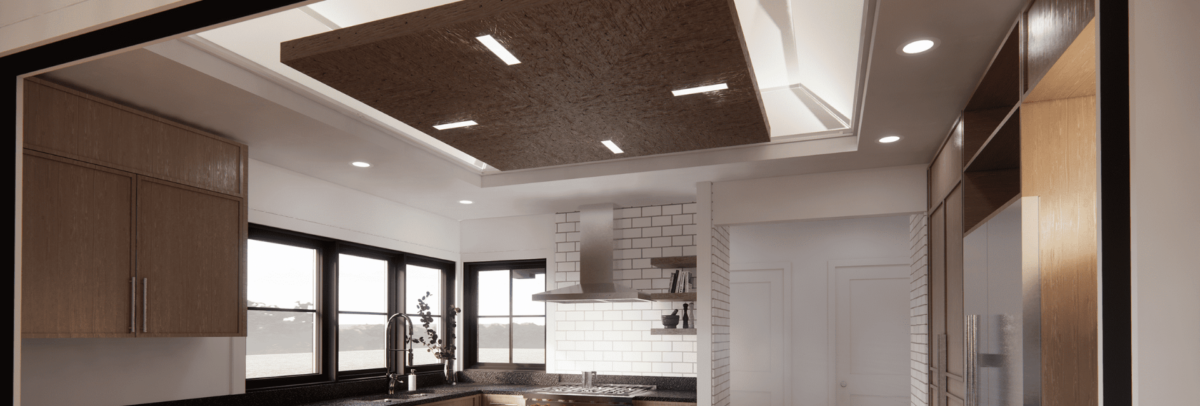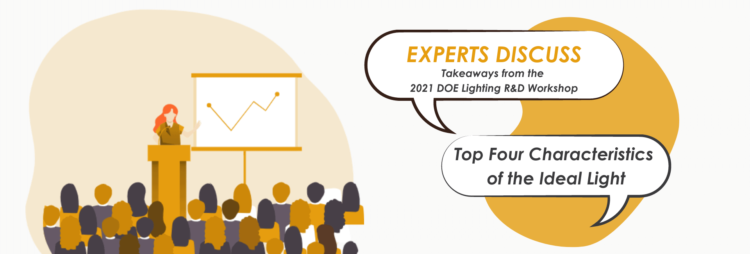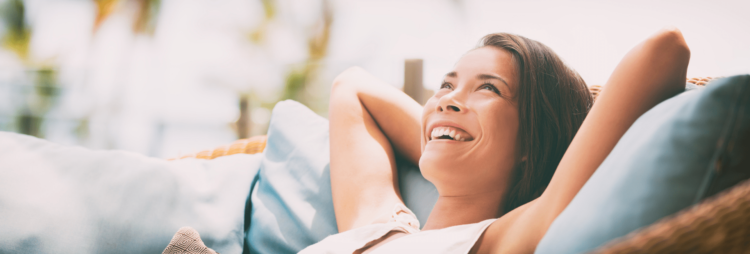
Lindsay Prichard-Fox, Founder and CEO of TiverBuilt, explains why OLED lighting allows for more freedom in lighting design
Why did you decide to use OLEDs for this project?
Our client came to us with a particular vision of what she wanted above the kitchen island. When I heard about it, I knew that OLEDs would be the best fit. Being able to design with wood and mixed materials for a “wow factor” aesthetic is huge.
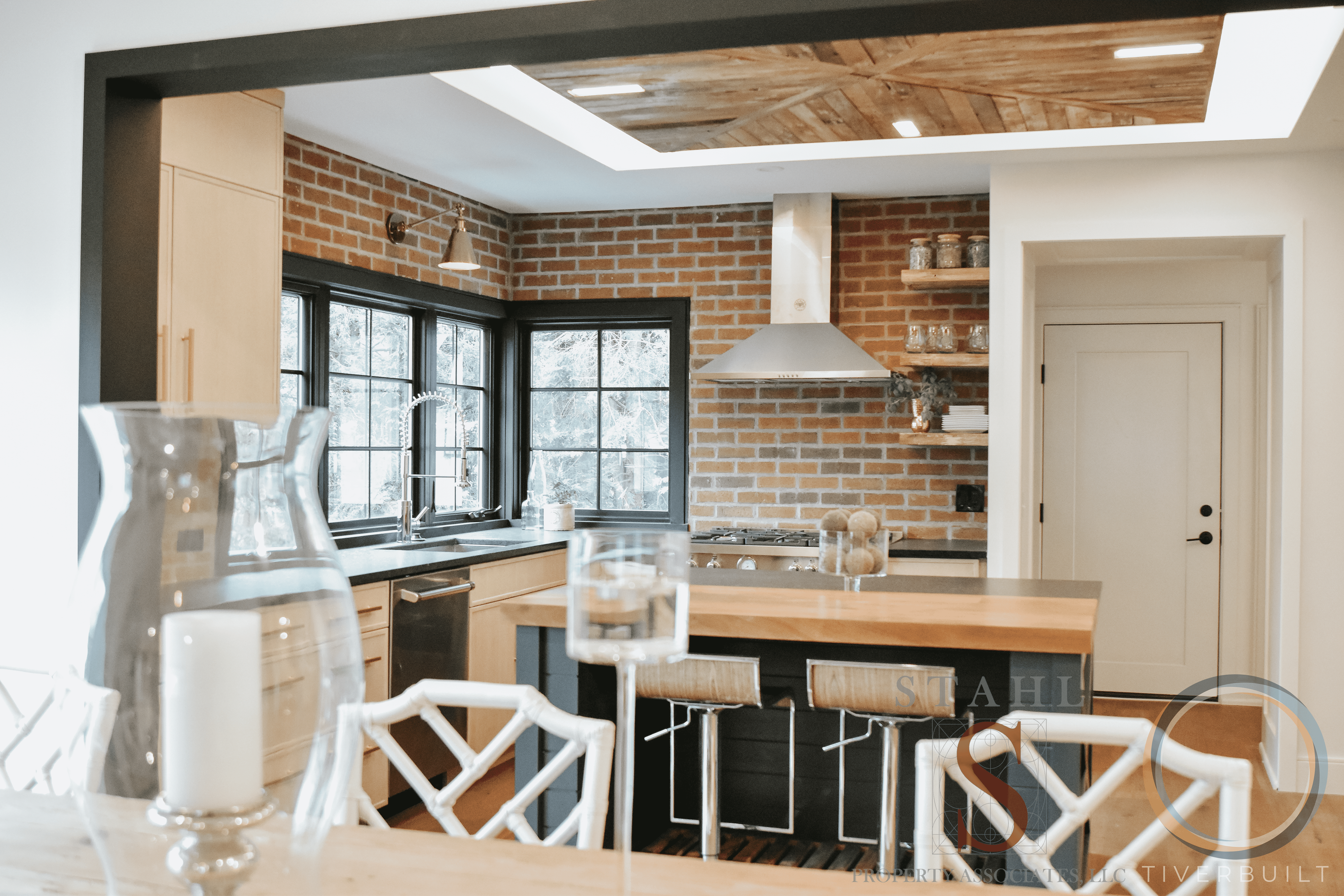
Kitchen remodel designed by TiverBuilt, featuring OLED lighting fixture
I would not have suggested a regular LED because we would have had to channel out more reclaimed wood. When we designed the fixture, we wanted to carve out just enough for the OLED unit. I’ve seen other installations of a wood surround with lighting and it usually has a void of black with spots of light coming through, which feels like a spotlight.
I like what is referred to as a “transitional style.” We take historic or classic features and repackage and reformat the design to have smooth lines and simpler profiles. This means you’re getting a classic aesthetic with a new innovative tie-in. That’s where I see myself using OLEDs in the future, and that’s what this project did for us. I mean, this was a historic barn wood embedded with OLED panels. That’s old as old can be, merged with a new technology, creating this beautiful win-win scenario. What I love most is that when the light is off, all you see is the captivating history of the wood.
How did the client react to the finished product?
She loved it. When she first envisioned the panel above the island, lighting was a significant roadblock. She thought it was the coolest thing to be able to design with lights that don’t compromise the overall aesthetic. It’s a striking piece, and no other lighting would suffice without a complete disruption of her vision.

Close up of OLED lighting fixture designed by TiverBuilt
How would you say that OLED lighting differentiates itself from other lighting technologies?
I feel like the lighting industry is trying to make the light bulb look as cool as possible. As a result, we often see a return to historic lighting like the Edison-style bulb. However, at the end of the day, you’re still forced to look at the light bulb. As a designer, sometimes I’d like the light bulb not to be there at all. Sometimes there’s a limit to how cool you can make a light bulb. When we design with OLEDs, we can blend the light source seamlessly into the design, and when the fixture is turned off, we’re left with a beautiful sculptural piece.
I also appreciate the light quality provided by OLEDs; the light is soft and pleasant without glare.
So many of the LED products have a hot, pinpointed light. It drives me crazy when I’m sitting in a dining room looking to have nice, subtle ambient light and end up having bright, harsh light coming from the chandelier. We are at a point in innovation where we don’t need to sacrifice our eyes or ambiance to have the benefit of energy efficiency.
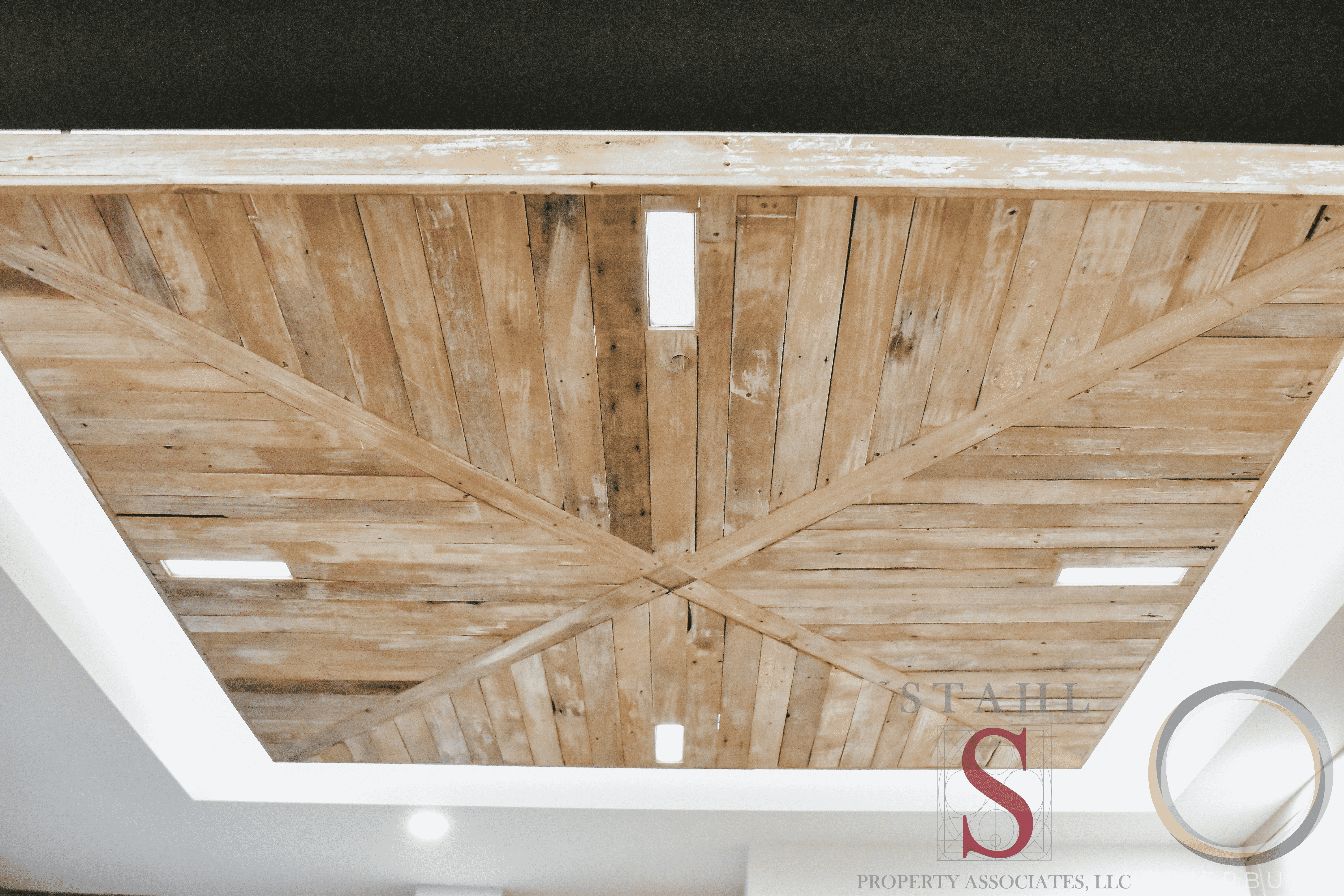
Close up of OLED lighting fixture designed by TiverBuilt
Do you think there are specific rooms or types of lighting that would utilize OLEDs best?
Absolutely. I feel wall sconces are this beautiful “jewelry” in a space. I also think that a chandelier or drop fixtures are where OLEDs can really excel because when the light is off, the fixture literally just looks like a sculpture.
I’m seeing designers using LEDs to create fixtures with contemporary aesthetics, and that simply doesn’t fit with the design of my house or many of our client’s homes. I think OLED light technology lends itself to so many different, exciting design aesthetics. It is exciting to develop lighting that provides the benefits of energy efficiency that complements a transitional design aesthetic.
Would you recommend OLED lighting and OLEDWorks to others?
Oh, I’m a total devotee! So, yes, I thought that the whole process was fantastic. The OLED team is excellent to work with. TiverBuilt uses the latest design software using Building Information Modeling to develop our projects; therefore, we needed the .IES file. An accurate .IES is essential to our process because that’s how we get our renderings to look so beautiful and accurately represent the amount of light we can expect from the fixture.
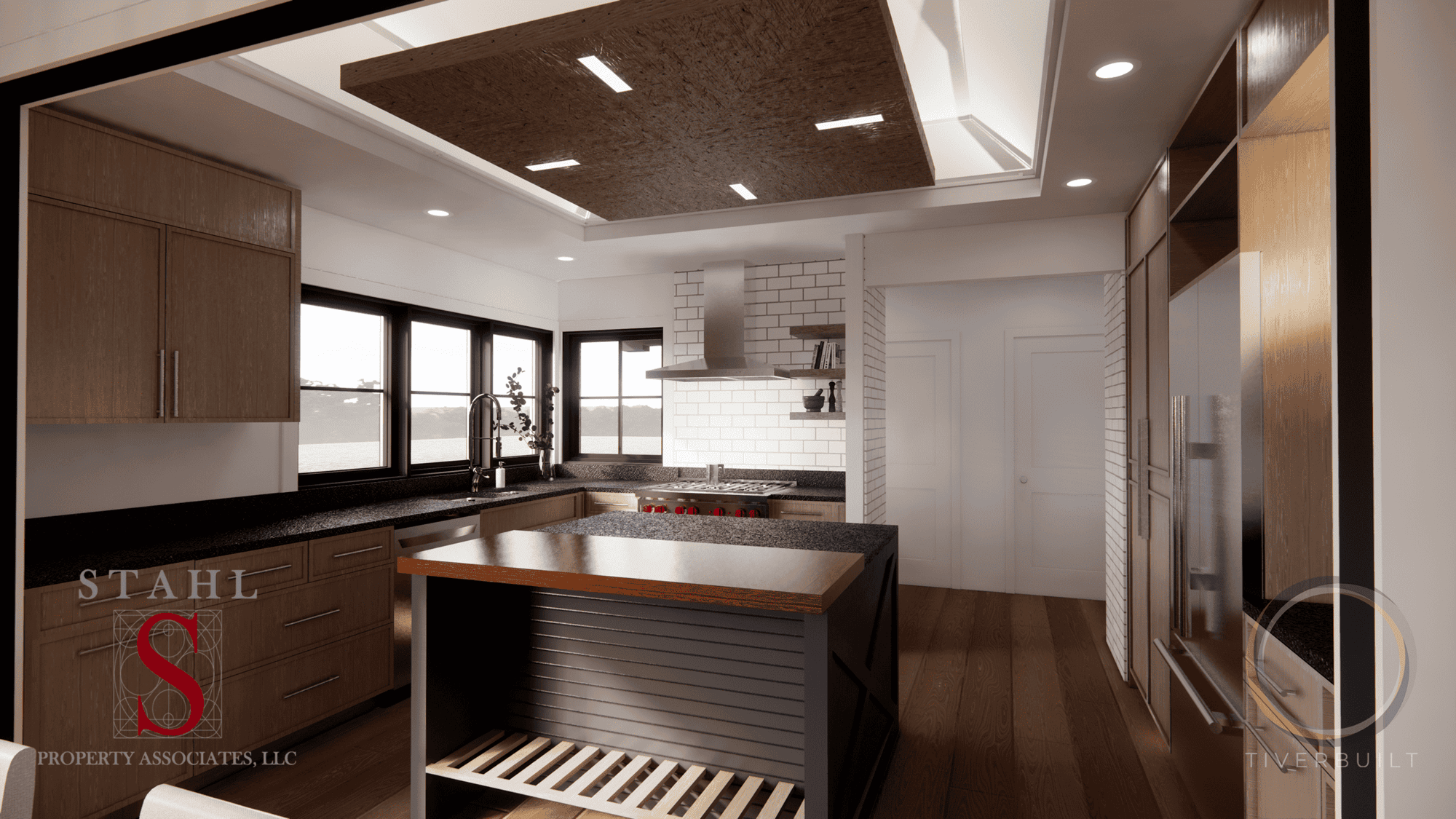
Photo-realistic 3D rendering of kitchen featuring OLED lighting, created by TiverBuilt
I’ve been itching to design with this product for years, so to have this opportunity was great. There are lots of places I would like to go with this technology. I am excited to infuse our transitional style into our lighting design and continue working with OLEDs.
TiverBuilt is a digital building company located in Rochester, New York. As one of the few companies in the United States to offer photo-realistic 3D Digital Construction directly to homeowners and builders, TiverBuilt designs, plans, and coordinates builds prior to construction to save time and resources.
If you are interested in learning more about OLED lighting, reach out to our team to learn about OLED lighting benefits with a focus on design freedom and aesthetic.
